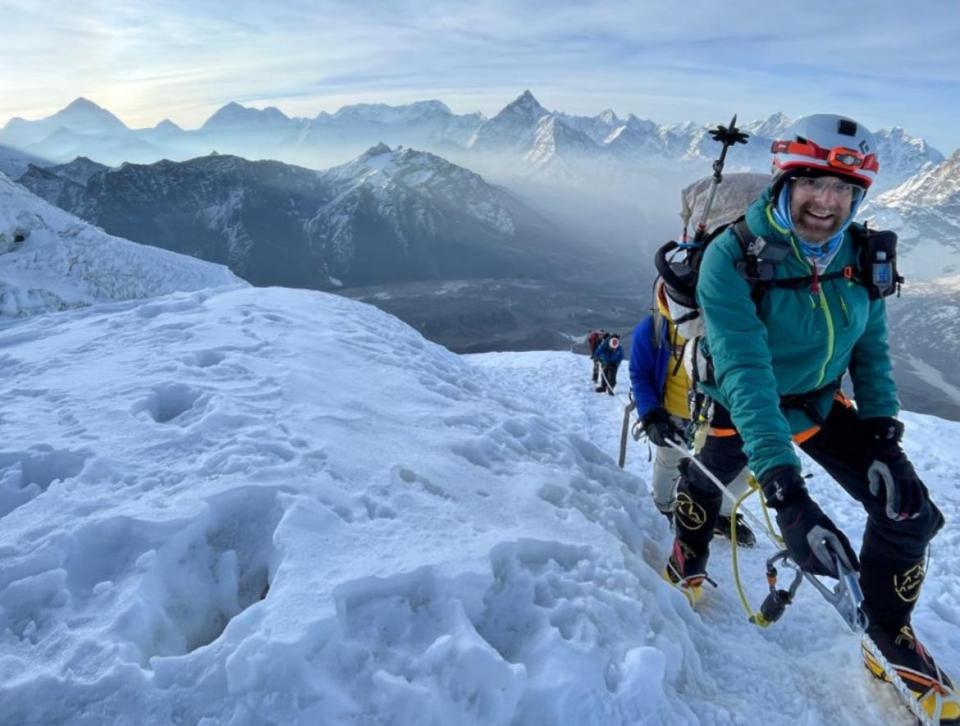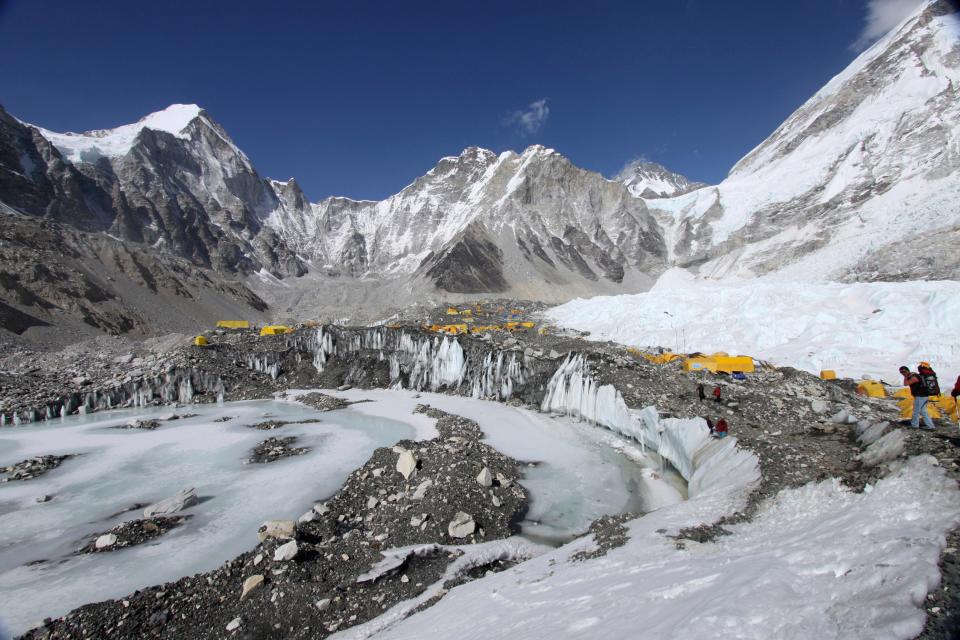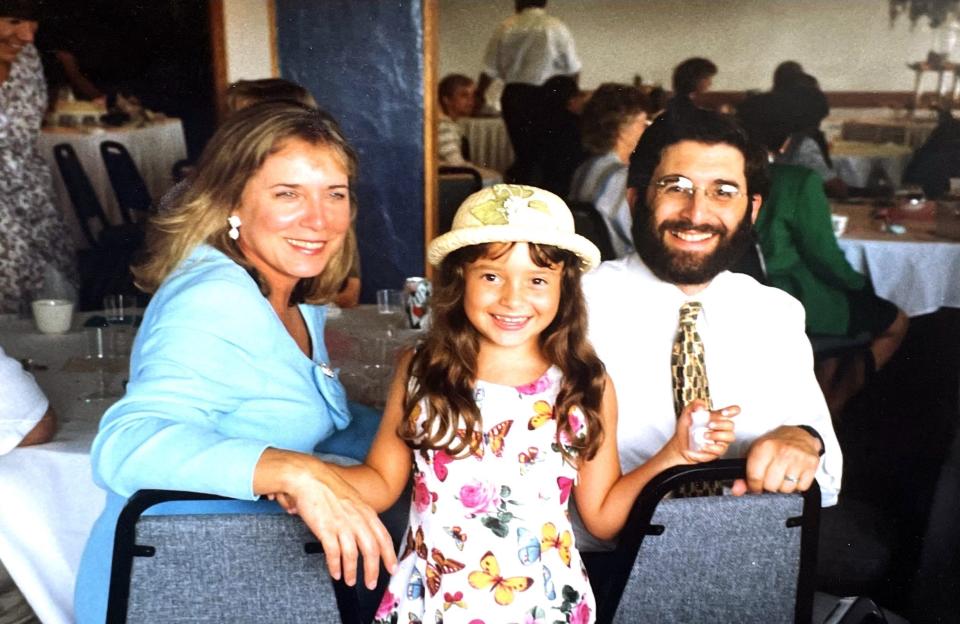American climber dies on Everest; retired doctor remembered as caring, whimsical

An American climber has died while on Mount Everest, likely from the sudden onset of an altitude-related illness, according to his family.
Jonathan Sugarman, a retired doctor who lived in Seattle, died on the world's tallest mountain Monday. Described by his family as "a highly experienced and passionate climber," the 69-year-old died at an elevation of about 21,000 feet at what's known as Camp 2, one of the stops on the typically long journey to summitting Everest.
"In every climbing party, he was the steady voice, administering equal measures of advice for health and life," according to Sugarman's online memorial, sent to USA TODAY by his daughter, Maya Sugarman.
Tributes poured in for Sugarman, described by various friends and family as a legendary latke chef who was always after the perfect crispness, a lover of the trumpet and "an exceptional humanitarian who touched and changed for the better lives from the deserts of the Navajo Nation to isolated villages in Alaska to the streets of Seattle."

Prepping for Everest
Sugarman and the team he was hoping to summit Everest with had been in the area for about a month, acclimatizing to the altitude and training by summitting nearby peaks. In the days before his death, Sugarman left Everest Base Camp (17,598 feet) with his team and climbed higher to Camp 2 (20,997 feet), where they were planning to take a rest day Monday before continuing up to Camp 3 (23,950) on Tuesday, according to the Washington-based International Mountain Guides.
"We ask the climbing community to allow our team and this climber's family the space and time to grieve and contend with their loss," CEO Eric Simonson said in a statement on the company's website.
The team hopes to summit toward the end of the month or early June, depending on the mountain's notoriously volatile weather.

Sugarman had previously suffered from altitude sickness at least once before, according to another expedition company, Uphill Athlete.
In 2016, Sugarman was at a camp on Cho Oyu, the sixth tallest mountain in the world, when it hit him and he had to abandon the attempt, which prompted him to turn to Uphill Athlete for help with training and endurance.
"While we were not working with Jonathan for the past year we previously had worked with him for three years," the company said on its website. "We knew him as a good, earnest guy. He was humble and he really cared about the Sherpa people."
The company said Sugarman also had "a whimsical side."
"He brought a plastic trumpet to basecamp to practice!" the statement said. "In Jonathan’s memory please remember to be grateful and loving to those around you."

Passion beyond the mountains
Besides his love for the mountains, Sugarman had a passion for the desert, which he developed on what was supposed to be a short-term appointment with the Indian Health Service and the Navajo Nation in Shiprock, New Mexico.
The "short-term" assigned turned into seven years, during which he married his wife Terese and became a dad.
"He and Terese explored the many treasures of the Southwest in a beat-up Jeep Wagoneer with little Maya bouncing in her baby carrier as they hiked the trails," his online memorial said. "When asked how hard it was to move after so many years, Jonathan expressed that 'leaving the desert becomes like leaving the ocean to someone on the coast. The peacefulness and the expanse become a part of you.'"

During a packed career that saw him leading several health organizations, Sugarman always retained his passion for helping those in need, the memorial said.
"During the COVID pandemic, Jonathan volunteered to help administer vaccination programs to the Seattle homeless community," it read.
Returning to climbing
In an interview with Uphill Athlete last year, the retired doctor said he had done some climbing in college but "quit cold turkey when I found myself doing something that had resulted in recent deaths and I realized that I was not appropriately concerned."
"I dragged around a climbing rope, harness, and rack for years, though," he said, eventually returning to the sport in his 50s when his college roommate invited him to Tanzania to climb Kilimanjaro.
"Although I wasn’t initially inclined, my daughter (then in college) asked if she could come too, and that sealed it," Sugarman said. "That led me to climb Mount Rainier a short time thereafter, to join the Mountaineers in Seattle, and to take a couple of climbing courses — and then embark on a number of domestic and international climbs."
Since returning to climbing, Sugarman summitted some of the world's highest peaks, including Aconcagua in Argentina (22,837 feet), Denali in Alaska (20,310 feet) and Cotopaxi in Ecuador (19,347 feet).
Though Sugarman died before he could reach his dream of summitting Everest, he spent weeks on the mountain and navigated some of its toughest and most dangerous sections, including the dreaded Khumbu Icefall, which requires climbers to walk across cravasses on ladders. Sugarman also summitted Lobuche (20,161 feet) and Island Peak (20,210 feet).
"Both (peaks) were fun, and gave me confidence that I was fit enough to navigate the Khumbu Icefall," Sugarman told Uphill Athlete last year. "Traveling through the icefall was amazing ... I was overcome with emotion to actually be looking at the Western Cwm, Lhotse, Nuptse, and Everest in real life instead of just in pictures."
When Sugarman reached Camp 3 last year, he decided that his Everest itch was scratched.
"I was quite certain that I’d not be back," he wrote in an email to friends and family, which Maya Sugarman shared with USA TODAY. "I was even more certain that my serious Himalayan climbing days were over, as evidenced in part by the fact that I left my (very expensive) mountaineering boots with my Sherpa guide."
Sugarman said he felt a "sense of closure and satisfaction" until he heard from climbing partners from the same trip that they had summitted the mountain and believed he would have made it, too.
"Basically, I thought they were probably right (and) a sense of unfinished business prevailed — the business being getting an answer to the question of how far up the mountain would let me go," he wrote. "Although I feel like I’m in much better shape this year than last, I’m also aware that only about 2/3 of those who attempt the summit are successful — and success rates are MUCH lower for old men like me."
So, he said he would define success not by reaching the top of Everest. But rather: "Giving it a good try and returning home, hopefully with all of my fingers and toes."
This article originally appeared on USA TODAY: American climber dies on Everest: Dr. Jonathan Sugerman of Seattle

